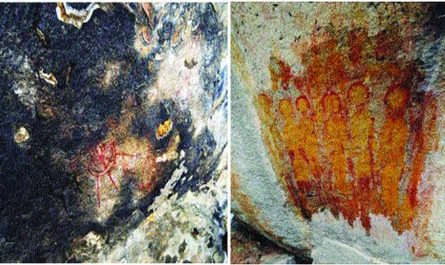In the desolate, frost-covered expanses of Siberia, where icy winds sweep across ancient glaciers, a tale has been preserved for millennia—a tale of a colossal creature, suspended in a moment of eternal stillness.
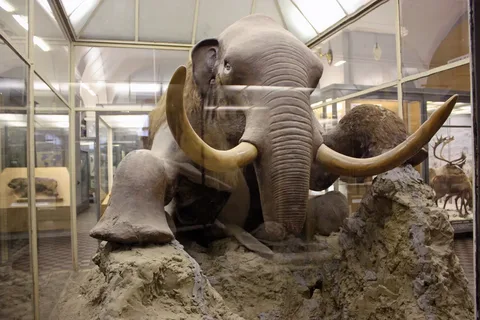
In 1900, near the frozen banks of the Beresovka River, a group of hunters stumbled upon an extraordinary find. It wasn’t gold or ancient artifacts, but the remarkably preserved body of a woolly mammoth, untouched by time. This wasn’t just a skeleton or a decayed remnant; the mammoth’s form was intact, holding secrets from a distant past.
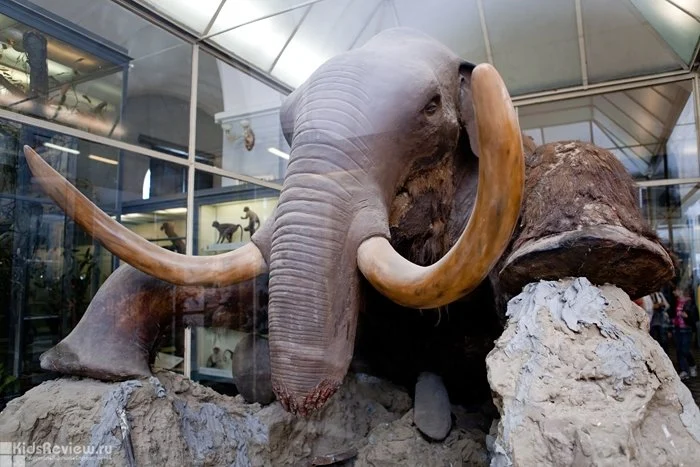
The mammoth’s posture was striking. It sat awkwardly, head tilted downward, hind legs shattered, as if it had collapsed mid-stride. Even more chilling was the evidence of its final moments: its mouth held delicate wildflowers, and its stomach contained undigested grass, leaves, and seeds. This massive creature, weighing up to 6 tons, had been eating moments before it was frozen in an instant. For 44,000 years, it lay locked in ice, time halted in a silent, frozen world.
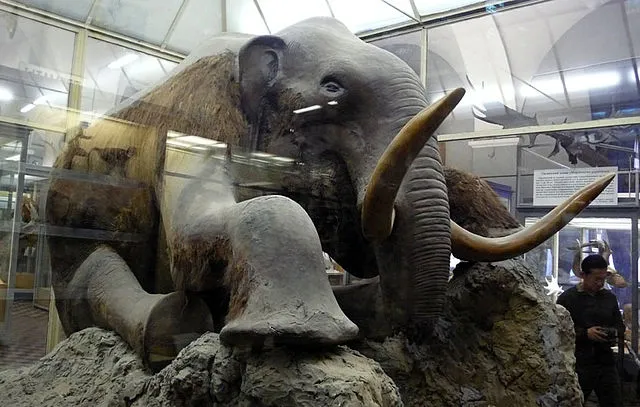
What could stop such a formidable beast so suddenly? Was it a catastrophic climate shift? A volcanic eruption spewing ash and cold? Or perhaps a flash-freeze triggered by a glacial landslide? Scientists have debated countless theories, yet the truth remains elusive, deepening the enigma of this discovery.
Today, the mammoth resides in a Russian museum, more than a mere relic. It’s a vivid snapshot of a lost world, a bridge between the Ice Age and today. Its closed eyes and interrupted step spark profound questions: What became of the lush grasslands it roamed? Are the ecosystems that sustained it gone forever? And could humanity, like the mammoth, be striding toward an abrupt and unforeseen end?
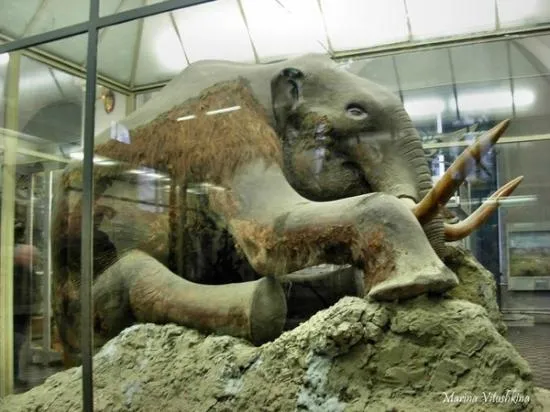
This frozen giant is more than an archaeological marvel. It’s a poignant reminder of Earth’s fragility, a whisper from a vanished era urging us to heed the past. The mammoth’s story is a call to reflect on our present and future, warning that even the mightiest can fall to forces beyond their control.
Somewhere, beneath layers of ice, a step remains incomplete. A meal sits undigested. And a mystery endures, waiting for answers.
Additional Information: The Beresovka Mammoth, discovered in 1900, is one of the most famous well-preserved mammoth specimens, now housed in the Zoological Museum in St. Petersburg, Russia. Radiocarbon dating places its death at approximately 44,000 years ago. Recent studies suggest possible causes like rapid freezing due to a polar vortex or entrapment in a bog followed by permafrost preservation, but no definitive explanation exists. Its remarkable condition, including preserved soft tissues, has allowed scientists to study its diet and environment, revealing a diet rich in grasses and sedges from a steppe-tundra ecosystem. This find continues to fuel research into Ice Age megafauna extinction and climate change patterns.
